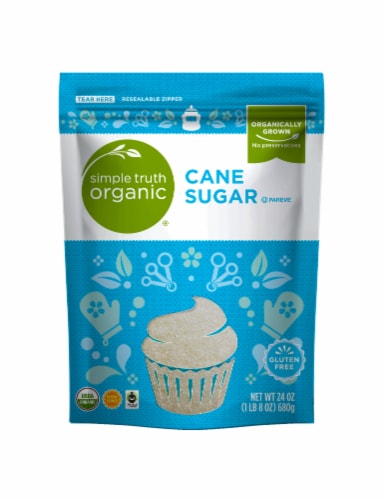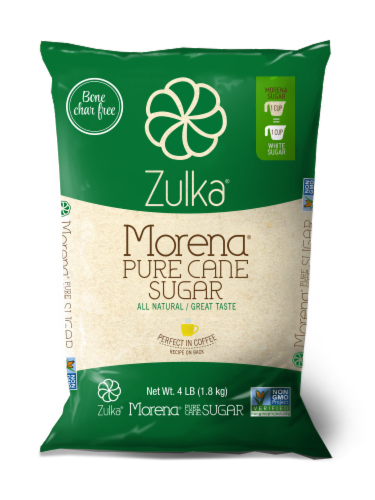Recognizing Cane Sugar Processing: A Comprehensive Overview of the Stages
Recognizing Cane Sugar Processing: A Comprehensive Overview of the Stages
Blog Article
Comprehending the Vital Methods and Technologies Employed in Modern Walking Cane Sugar Handling
The development of walking cane sugar handling has actually been considerably formed by the combination of sophisticated strategies and modern technologies that deal with both effectiveness and sustainability. As we discover these critical innovations, it comes to be necessary to take a look at just how they not only improve production but likewise align with more comprehensive market patterns and consumer demands, increasing questions about the future of sugar processing and its ramifications for international markets.
Historic Context of Cane Sugar Handling
The historical context of cane sugar processing discloses an abundant tapestry of agricultural development and cultural exchange that has actually formed its growth over centuries. Coming From Southeast Asia, sugarcane was cultivated as early as 8000 BCE - Cane Sugar Processing. The procedure of removing and improving sugar acquired energy in India, where methods for crystallization were developed around the 6th century. This knowledge traversed to the Center East, and by the 12th century, sugar became a valued commodity in Europe, causing the facility of sugar plantations in the Mediterranean.

Advanced Removal Strategies
Effectiveness in walking stick sugar removal has seen substantial improvements, driven by the need for greater returns and lower manufacturing prices. This method not just enhances sugar yield but likewise minimizes the energy required for processing.
Additionally, the fostering of membrane filtration innovations, such as nanofiltration and turn around osmosis, has revolutionized the separation of sugar from contaminations. These approaches permit for the discerning permeation of sugar molecules while maintaining larger pollutants, streamlining the extraction process and decreasing waste.
In addition, the assimilation of continuous extraction systems has actually brought about enhanced operational effectiveness. Cane Sugar Processing. These systems maintain a continuous flow of walking stick product, making sure optimum removal conditions and lowering downtime connected with set processing
Ingenious Refining Technologies
Refining strategies in walking stick sugar processing have actually gone through a transformative shift, driven by the need for higher pureness and improved item quality. Among the most notable innovations is the fostering of membrane layer filtering innovations, such as ultrafiltration and nanofiltration. These processes efficiently get rid of contaminations and colorants without the demand for extensive chemical therapies, therefore maintaining the sugar's natural flavor and enhancing its charm.
An additional considerable innovation is website here the usage of ion exchange materials, which permit for discerning removal of unwanted ions from sugar solutions. This modern technology not just enhances the total purity of the final product however also adds to minimized waste and ecological effect.
Furthermore, innovations in adsorption techniques, utilizing activated carbon and various other innovative products, have actually proven efficient in decolorizing sugar solutions while preserving ideal quality. The combination of these innovative refining technologies ensures that manufacturers can create refined sugar with remarkable quality and taste, satisfying the developing choices of customers.
Automation and Control Equipment
Recent advancements in refining technologies have actually paved the means for substantial improvements in automation and control systems within cane sugar processing centers. These systems utilize innovative software application and hardware to improve operational efficiency, decrease human error, and ensure constant product high quality.
Modern automation integrates different parts, consisting of sensing units, actuators, and programmable reasoning controllers (PLCs), allowing real-time tracking and control of critical procedures. For instance, pressure, flow, and temperature prices can be precisely managed throughout removal, explanation, and crystallization phases, enhancing efficiency and lessening waste.
Additionally, progressed information analytics and artificial intelligence formulas play an essential duty in predictive maintenance, allowing operators to prepare for equipment failings prior to they occur. This proactive method not only lowers downtime however additionally extends the life-span of machinery.
Furthermore, automation facilitates the implementation of Market 4.0 concepts, empowering sugar mills to achieve higher connectivity and data exchange across procedures. As an outcome, decision-making ends up being even more active and informed, ultimately improving the overall competitiveness of walking stick sugar production. With these advancements, the market is well-positioned to fulfill growing global demands while preserving operational excellence.
Sustainability Practices in Sugar Manufacturing
Sustainability practices in sugar production have ended her latest blog up being significantly important as the industry seeks to balance financial viability with environmental responsibility. As customer understanding grows regarding the environmental influences of farming practices, sugar manufacturers are embracing innovative approaches to reduce their eco-friendly impact.
One considerable technique is the application of precision agriculture techniques, which make use of data analytics to optimize resource use, such as water and fertilizers. This lowers waste and reduces the influence on neighborhood ecosystems. Additionally, many manufacturers are transitioning to renewable power sources, such as biomass from sugarcane byproducts, to power their operations, thus lowering dependence on fossil gas.
Water administration practices are additionally important; rainwater harvesting and efficient irrigation systems aid minimize water shortage problems. Cane Sugar Processing. Additionally, integrated parasite administration strategies minimize chemical usage, promoting biodiversity and dirt health
Corporate social responsibility campaigns are emerging, with companies purchasing neighborhood communities and making certain fair labor techniques. By embracing these sustainability practices, the sugar industry not only enhances its credibility however also contributes to an extra lasting agricultural landscape, paving the way for future generations.

Final Thought
In summary, modern walking cane sugar handling integrates a variety of sophisticated methods and innovations that considerably improve efficiency, sustainability, and yield. Jointly, these improvements place the cane sugar market to fulfill modern demands while resolving vital worldwide obstacles.
The evolution of cane sugar handling has actually been substantially formed by the assimilation of sophisticated techniques and modern technologies that resolve both performance and sustainability.The historic context of walking cane sugar handling reveals an abundant tapestry of agricultural innovation and social exchange that has formed its development over centuries. Developments in milling and refining arised, laying the foundation for modern-day walking stick sugar processing.Refining techniques in walking cane sugar handling have actually undergone a transformative change, driven by the need for greater purity see here and boosted product quality.In recap, contemporary walking stick sugar handling includes a variety of innovative techniques and technologies that substantially enhance efficiency, return, and sustainability.
Report this page